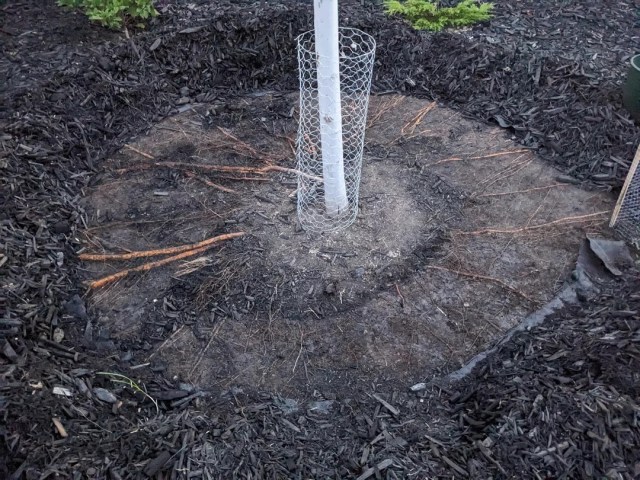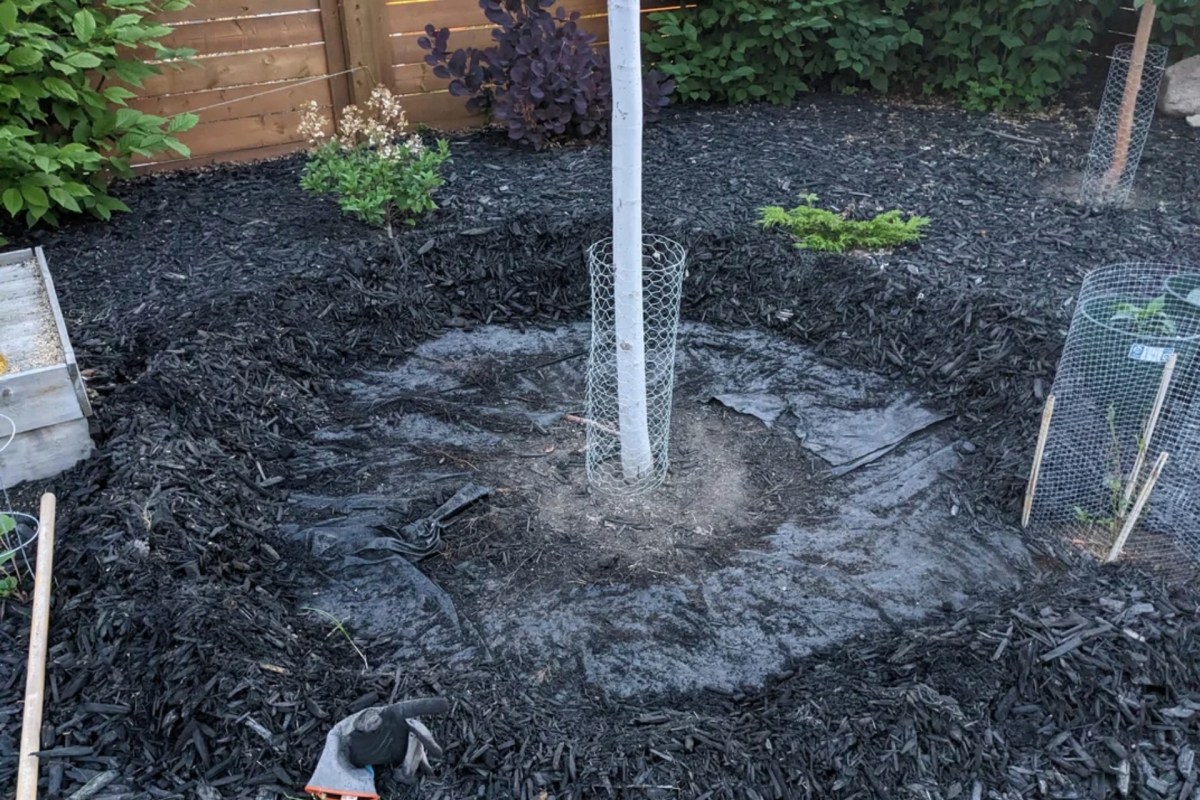Sometimes plans for a dream garden don't come to pass. Whether it be invasive species or soil quality, there are always challenges to consider. Landscape fabric is one such challenge.
One Redditor shared a series of concerning photos of landscape fabric on the subreddit r/arborists. In the images, elongated roots are surrounding a maple tree. The original poster believes the issue was caused by the fabric.

"This Maple tree has been in [for] about three years. After removing the landscape fabric, I see a lot of thick roots running along the surface of the dirt just under or intertwined with the fabric," the concerned Redditor shared.
"I assume this is not normal and is a side effect of putting in the landscape fabric in the first place," the original poster said of the exposed roots.
While landscape fabric can help control erosion, it can release plastic particles into the soil. And there are low-maintenance options to grow your lawn without unwanted side effects. Native plants, which have adapted to their surrounding regions, can save you much time and money.
For example, they are more drought-resistant, use less water and fertilizer, and require less mowing. This is a big relief to your wallet. According to the Environmental Protection Agency, watering the typical American lawn for 20 minutes every day would be the equivalent of taking more than 800 showers.
Clover lawns, buffalo grass, and even xeriscaping could complement the maple tree the OP wants to see flourish. And people seem to be catching on to the value of having native plants. In March, the Guardian reported that Manhattan's Roosevelt Island will be adding 1,000 native plants to a 2,700 square-foot plot.
One Redditor offered suggestions on how to solve the OP's dilemma.
"Definitely use an inch or two of decently rich topsoil. I would not want only mulch that would be likely to blow or wash away leaving those roots exposed to sun," they wrote.
Another user confirmed the OP's suspicions, saying: "I don't doubt that fabric played a role in the quick rise of these roots."
Join our free newsletter for easy tips to save more, waste less, and help yourself while helping the planet.









